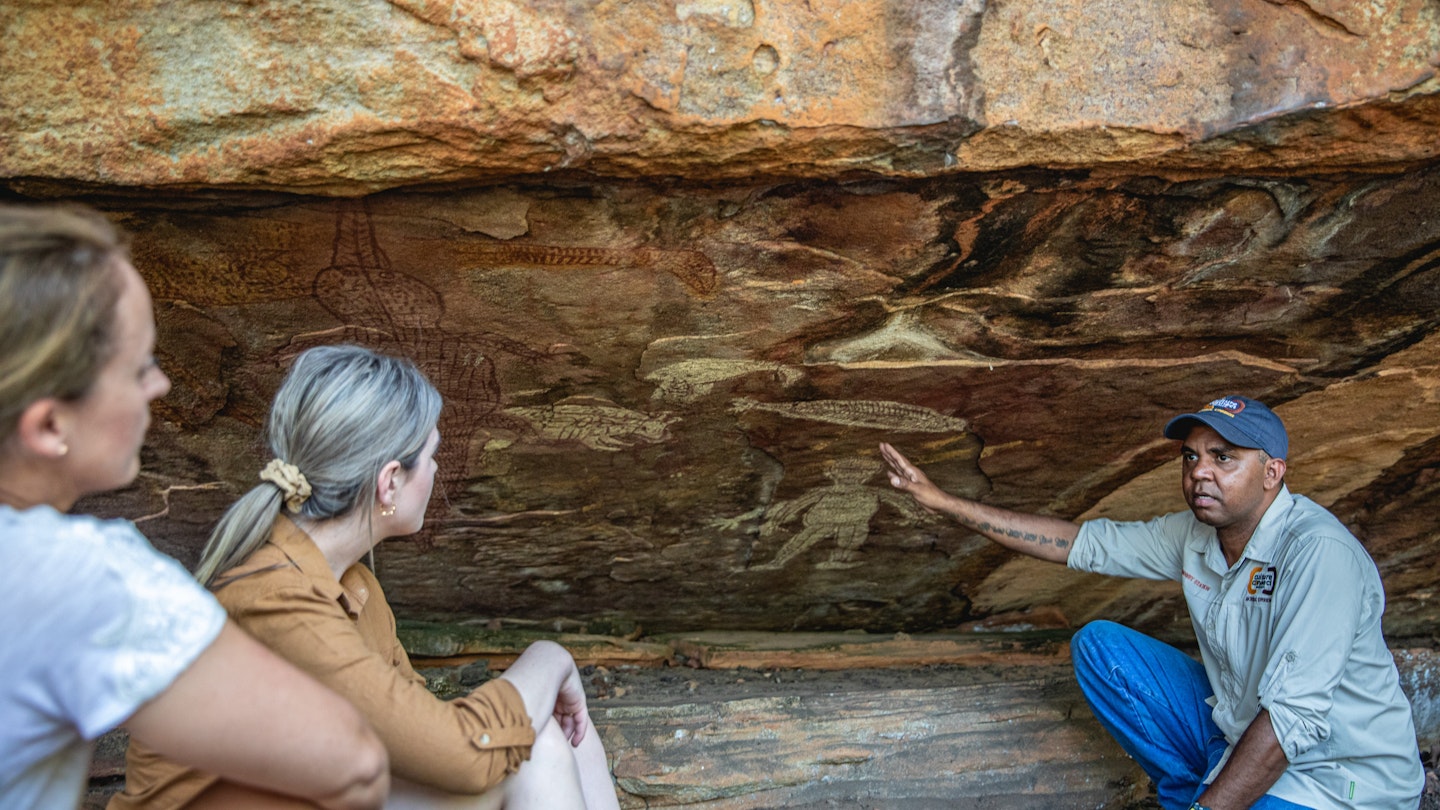As a non-Indigenous Australian with much to learn about our nation’s First People, I saw the past year (with the country’s international travel ban) as an opportunity to support the travel industry while learning from its leaders.
We’re talking about people who coexisted with three-ton marsupials and lizards as big as cars. People who were baking bread 18,000 years before the Egyptians. And people who were likely to have been the world’s first astronomers. So as domestic travel restrictions began to ease in Australia, I hit the road to discover some of the secrets of the world’s oldest living culture.
Indigenous Tourism Rebooted
While the promotion of Indigenous tourism hasn’t always done the best job of showcasing an authentic version of Aboriginal culture, the industry has come a long way since it began to take off in the 1990s.

From discovering the Dreaming stories connected to the twinkling canopy above Uluru in the Northern Territory to bedding down at an award-winning Aboriginal-run ecolodge on Western Australia’s Dampier Peninsula, there are now hundreds of incredible Aboriginal-owned, run, and supported tourism experiences available in every corner of the country, including more than 185 in Tourism Australia’s Discover Aboriginal Experiences collective alone.
A not-for-profit launched nationally in 2020 aims to enable prosperity in Aboriginal and Torres Strait Islander communities through tourism. The platform Welcome to Country has made it even easier to plan memorable – and sustainable – Indigenous tourism activities.
Connecting with Country
On the New South Wales South Coast, Brinja-Yuin woman Trisha Ellis reveals the significance of the ancient shell midden that covers Bingi Bingi Point. This site is an early example of sustainable farming, indicating that this place was once the region’s most popular seafood restaurant.
“When Yuin people returned to the coast after the cold season, they’d choose two or three shellfish species to eat, and leave the rest alone,” says Trisha, who offers walking tours and cultural awareness training through her business Minga Aboriginal Experiences. “When the next group came along, they’d observe the midden to determine what had been consumed, selecting a different species to ensure the others could regenerate. Instead of trying to control the environment like European farmers, we allow nature to do the work for us.”

On a two-hour walk on a section of the Bingi Dreaming Track – an ancient wayfaring pathway linking significant Yuin sites – Trisha reveals the myriad ways her ancestors have lived in harmony with this wild stretch of the Eurobodalla Coast. For over 20,000 years, they have thrived amid sapphire blue seas imbuing deserted golden beaches with life. From the bright magenta fruiting bodies of the pigface plant that taste like pleasantly salty kiwifruit, to the controlled burns that ensured a plentiful supply of wildlife to hunt throughout the year, there’s so much to learn.
At the other end of Australia’s east coast, near the World Heritage-listed Daintree Rainforest in Far North Queensland, Kuku Yalanji man Aaron Port, a guide with Walkabout Cultural Adventures, teaches me the art of using a traditional spear to catch mud crab – a staple of bush tucker. Although our catch wasn’t large enough to sustainably harvest, I soon discovered our tropical surroundings are bursting with delicious snacks, making it a challenge to adhere to the Aboriginal custom of taking only what is needed from nature.

Further north, near Cooktown, Balnggarrawarra man Vince Harrigan, a guide with Culture Connect, led me on a bushwalk to a series of beautifully preserved ancient rock art galleries that few non-Indigenous people have ever witnessed. Before entering the site, Vince called out to his ancestor spirits in language to announce our arrival – a tradition highlighting the deep connection Indigenous Australians have with their Elders that transcends the physical realm.
See Australia Differently
Back home in northern New South Wales, Arakwal-Bundjalung woman Delta Kay recently launched a series of cultural and bush tucker walks. Despite being familiar with local Aboriginal culture and history, I was astounded to learn during Delta’s Byron Bay cultural walk that the Bundjalung word for my hometown is not Cavanbah, as it has always been known by non-Indigenous locals, but Gabanbaa, the proper pronunciation having long been lost in translation. Delta’s moving Welcome to Country and the evocative Dreaming stories she shares ground me to this land in ways that Byron’s array of wellness gurus could only hope to master.

I’m currently planning an adventure to Queensland’s northern tip to experience Torres Strait Islander culture, and after reading acclaimed Aboriginal author Bruce Pascoe’s latest book, Loving Country: A Guide to Sacred Australia, an Aboriginal-guided tour of the 40,000-year-old fish traps in Brewarrina, central-northern New South Wales, is now high on my list.
However, at times Aboriginal guides are unable to delve deeper into particular Dreaming stories or significant sites due to cultural reasons. Moreover, since English is a second, third, or even fourth language for some guides—especially in remote areas—communication can occasionally be challenging. Nevertheless, these aspects are integral to the Indigenous Australian cultural experience. I have been fortunate to participate in some transformative non-Indigenous Australian tourism experiences, but there is something incredibly special about exploring Australia through the lens of a Traditional Custodian that every traveler should experience at least once. Now, more than ever, the lessons learned are invaluable.




